The Apple iPad 2 Review
by Brian Klug, Anand Lal Shimpi & Vivek Gowri on March 19, 2011 8:01 PM ESTSmart Covers
Lately Apple has been trying its hand at first party case solutions. It stated with the bumper on the iPhone 4, carried over to the original iPad, and continues now with the iPad 2. Bumpers were an interesting idea, though clearly designed to mitigate unintended antenna attenuation from holding the phone in your hand, and the first iPad case, while novel, never felt quite right in the hands and had an unhealthy attraction to table crud. I also go over smart covers in our video review.
Third time's a charm, and this time they're both better engineered and endowed with the magic of magnets - they're called called smart covers.
I told Anand that I wasn't going to buy another expensive first party cover at launch just because there weren't any other options, yet here I am with a black leather smart cover.
Smart covers come in two materials - polyurethane and leather. There are five neon polyurethane colors and five more subtle/traditional leather colors. Polyurethane runs $39.00, leather will cost you a somewhat staggering $69.00. I opted for the black leather, Anand opted for neon orange and blue to match the official AnandTech color scheme (why didn't I think of that?).
The polyeurethane covers have a soft textured feel to the front and get the job done at the same price as the first Apple iPad cover. The colors aren't quite as saturated as you'd expect (it's more of a light blue and creamsicle rather than neon blue and lambo orange) but they still look pretty good.
The leather version feels and looks real, and passes the standard sticky test for leather. The outside of the cover is the actual leather surface, whereas the inside is a soft microfiber material. Both the polyurethane and leather models have this microfiber interior. The benefit is that it does keep the screen somewhat clean, the only downside is that it doesn't clean along the vertical strips where the smart cover folds. After a couple of days, you end up with some vertical strips of greasiness punctuated by thick ones of clean.
The smart cover aligns and attaches to the body of the iPad 2 using six magnets along its side that line up with a similar set of magnets on the device. When I acquired the smart case at launch, I immediately set out to determine what magnetic wizardry was at play and borrowed some magnetic viewing tape from my friend Alex (who wrote the glass section). Also no, the smart cover does not work with the iPad 1.
You can clearly see the set of magnets on the iPad 2 and smart cover that are used for alignment using the magnetic viewing film. This strip is from United Nuclear, but there are other vendors online. There are two visible sets of three magnets on the iPad 2 which mate up with corresponding patterns of magnets on the smart cover.
The magnetic viewing film is comprised of tiny beads with a small nickel filament inside, and are suspended in a fluid between two transparent polymer sheets. One side of the bead is reflective and appears light green, the opposite side is matte and appears dark green. The nickel filament orients along the magnetic field, and just like that we can see it.
The iPad 2 also has magnets on the far right side to keep the smart cover latched closed. These mate up to an appropriate set of magnets on the smart cover. Inspecting the smart cover carefully also shows a circular magnet which is used to trigger the iPad 2’s magnetic lock sensor.

The circular magnet above the strips of bar magnets is used for signaling the closed/lock sensor on the iPad 2.
Unsurprisingly, you can also make MacBooks and MacBook Pros that use the same kind of magnetic latch sensor go into standby by waving the smart cover or iPad 2 over just the right place. There’s an excess of magnets on the far right of the smart cover to hold the flap in position when rolled upon itself. The only other unintended consequence of putting so many magnets in the iPad 2 is that it sticks to every ferromagnetic surface. The cafe I frequent has metal tables, and the iPad 2 literally sticks to the surface until you yank it off.
The first time you fire up the iPad 2, the area in general settings lacks any toggles for the smart cover lock. After you attach the smart cover and activate the sensor once, a new toggle appears. It's one of those subtle things that Apple does which fits with the - keep extraneous settings and indicators hidden when they're not actually doing something - philosophy.
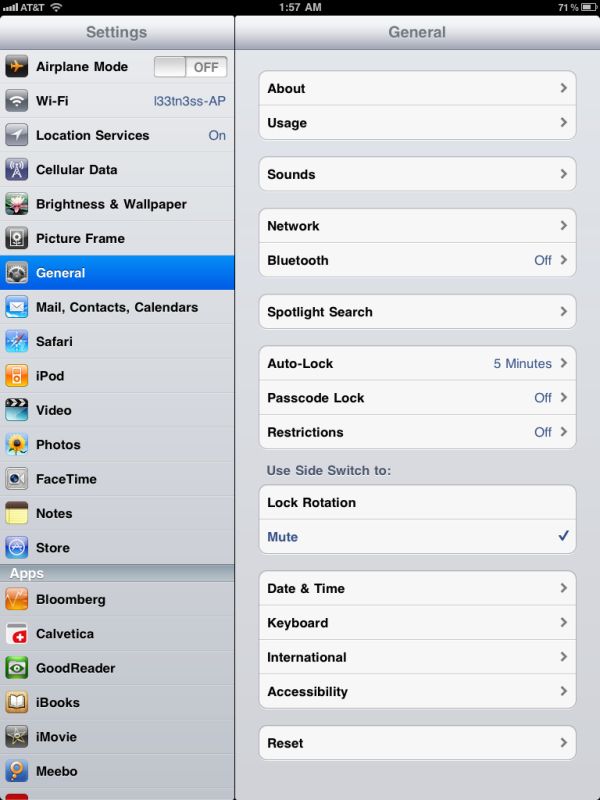
Left: Before attaching the smart cover for the first time, Right: After attaching the smart cover.
The smart cover can be rolled onto itself and into a triangle, which then angles and supports the iPad at 15 degrees for typing on a flat surface.
Push the iPad 2 further, and it'll stand upright at 115 degrees for use as a more traditional display, say if you have the Bluetooth keyboard or want to use it to watch movies.
The smart cover, while novel, has a few puzzling flaws. First up is what position to put the flap when the cover is opened and held in the hands. Folding the smart cover around to the back works, but magnetic attraction is weak and flap doesn’t stay in place at all. This is how users place the flap in videos on Apple.com and in marketing materials. The cover also makes it difficult to access the power and volume buttons in this position, though admittedly locking functionality with the smart cover should be left to the flap.
Left folded completely over, the second problem is that the cover then completely occludes the iPad 2’s rear facing camera. The other option is to fold the cover in half, which is probably the best solution. You don’t cover up the camera, and the cover doesn’t flap around as much. It still isn’t entirely secure, however.
Third, the smart cover leaves you with the same limitation as the first Apple iPad case: there's no way to make the iPad 2 stand up in portrait mode. There are a couple of landscape options as we described earlier but if you want to prop up the iPad 2 in portrait mode you're out of luck.
The final problem is that the smart cover doesn’t protect the rear of the iPad 2, which any iPad user will tell you is the surface that immediately starts to show aging from scuffing, scratching, denting, and white aluminum oxide from handling. Aluminum is a soft material, and while the iPad 2's aluminum seems to be harder and less porous than the MacBook Pro, it still picks up table crud like nobody's business. It’s frustrating because the smart cover is otherwise one of the most innovative parts of the iPad 2 experience.
As a stand, the smart cover is excellent, and it’s also nice to see Apple finally adopting some magnetic signaling for when to lock the device. Any Blackberry user will tell you this isn’t anything new at all, but execution here is indeed awesome.


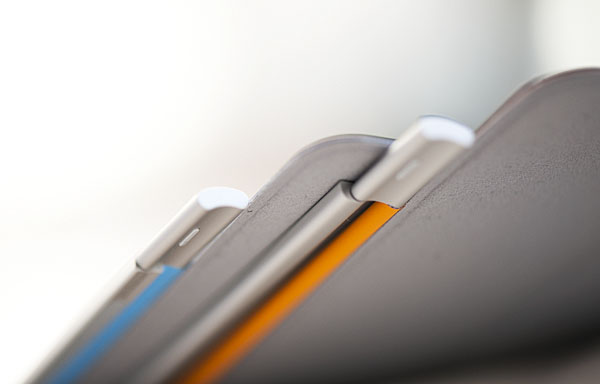
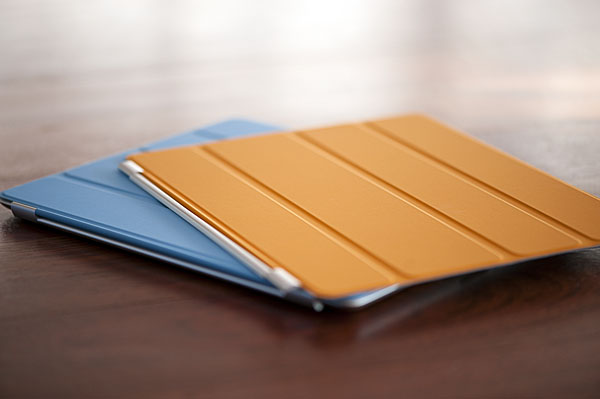
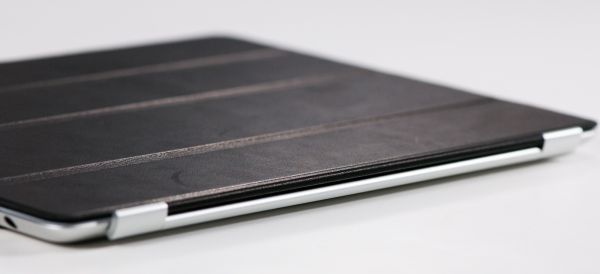
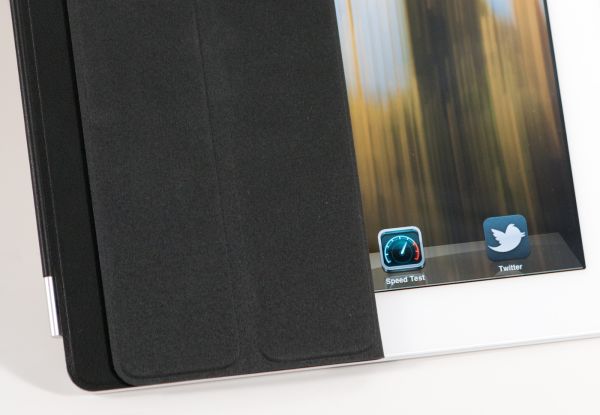
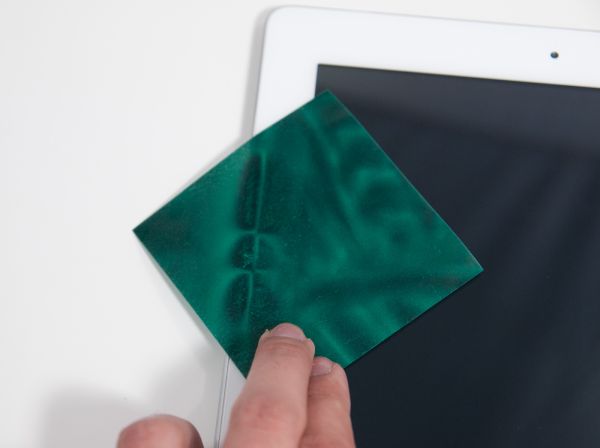
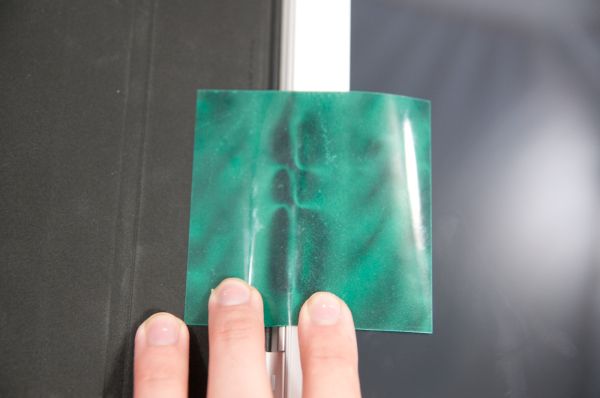







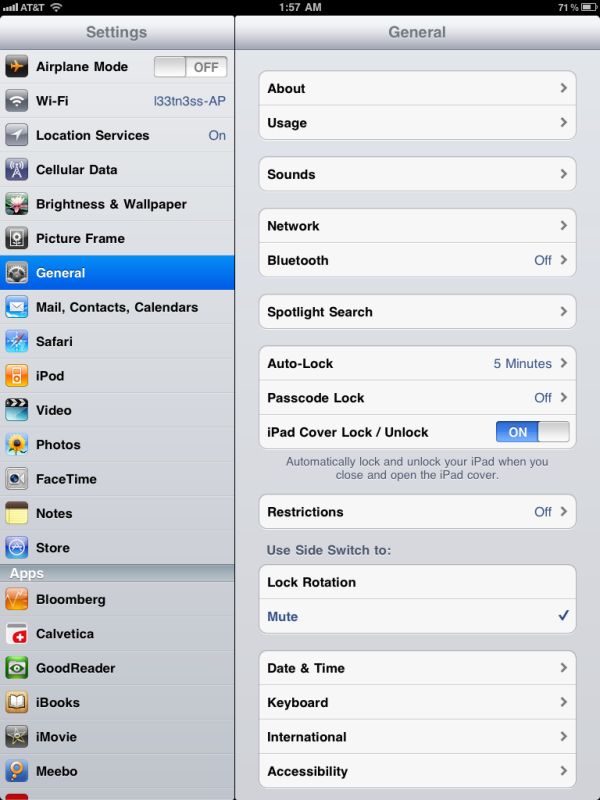
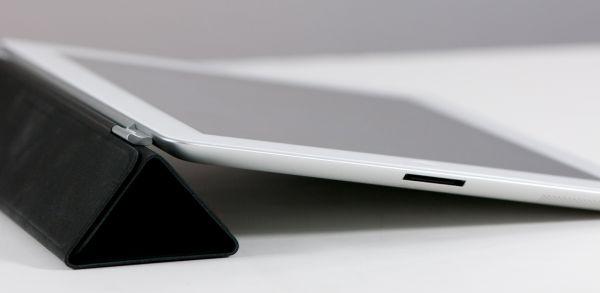
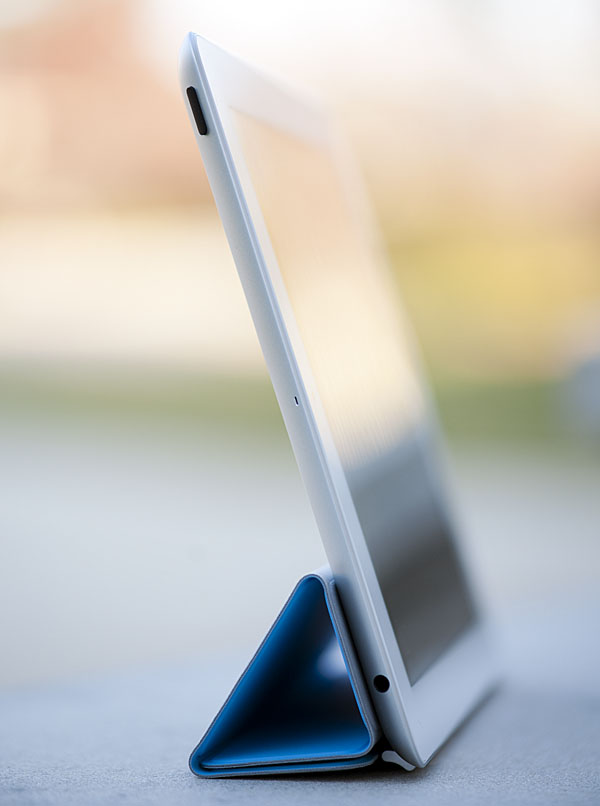
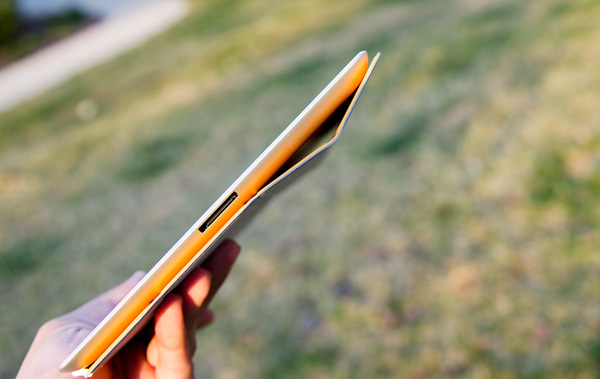
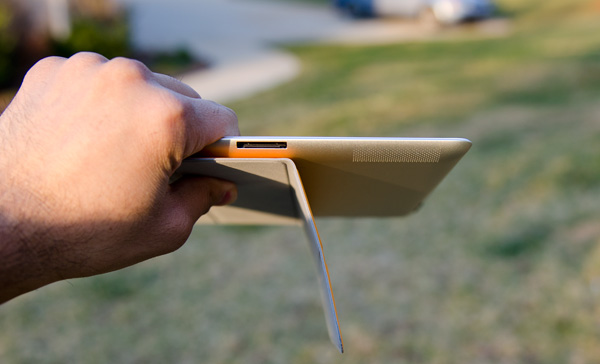








189 Comments
View All Comments
VivekGowri - Saturday, March 19, 2011 - link
I think it's $799, but I agree, it's too high. The equivalent iPad, at $729, is also way up there - really the only iPad that makes much sense as far as value goes is the base 16GB WiFi. I think the Xoom is probably going to have it's price cut by at least $100, if not $200, before it actually gets anywhere - ASUS took the right tack by putting it's lowest end Honeycomb tablet at $399.KoolAidMan1 - Saturday, March 19, 2011 - link
Where the iPad really works for me is as a travel device and in the living room. The iPad is just much nicer to use with in-flight wifi. Small, no cable management, and the battery will outlast a LAX-JFK roundtrip. My laptop lives in the overhead storage bin.You mentioned that the iPad has replaced the ThinkPad in airports, and I think that is spot-on. It is just so much more convenient and manageable to use compared to a laptop. I've left the laptop at home twice and I didn't miss it much, aside from not being able to play Starcraft 2 when I'm on the road. :)
The "sharing" aspect of the device has great advantages in a work environment, especially when you want to go over PDFs with a group of people. No need to crowd around or turn a laptop, just pass around the iPad.
As for the living room and bedroom, self explanatory. Not being tethered to the home office in order to fire off email is nice. Ditto using it as a universal remote in the living room.
It is a luxury device and a supplement, absolutely, but a damn good one.
nickdoc - Sunday, March 20, 2011 - link
Finally a sensible person. We are definitely on the same page.kevith - Sunday, March 20, 2011 - link
"You're absolutely right" almost always really means: "I totally agree..." :-)relentlessfocus - Saturday, March 19, 2011 - link
As always a real insight into the hardware. I'd like to make an observation about generalising from your own inability to find something that tablets add to your PC./smartphone mix to the larger sphere of buyers. Indeed most are not crazy and overly rich.My friends have a 2 year old child. I have no doubt that eventually she'll be reacting with laptops and desktops but my oh my how much my friends talk about the 3 of them with the iPad. Not an Anandtech thing... fine. A real life use. I think so.
Jake Humphrys is the lead for BBC's Formula 1 coverage here in the UK. While talking live in the pits with his co-commentators he now holds an iPad cupped in his hand that he gracefully reads from and then puts to his side as he gets live update info from his directors as the show is broadcast. OK, its not an Anandtech thing but its a real life use for a tablet that you wouldn't do with a netbook or notebook.
It's being used by coaching staff in sports and by doctors making their rounds in hospitals. It's used by major corporations for field workers running in house bespoke apps for catalogues and inventory and real time pricing etc. It's used by estate agents in the field with their clients and its used in trendy clothing shops like All Saints to display the entire store catalog for customers to browse. I could without a doubt put together 100 real life uses that "did figure out a use for it" distinctive from what you might do with a netbook or laptop or even desktop.
Your reviews set the gold standard in so many ways but in this one way its a shame you brought such a limited perspective to the usefulness of touch tablets in the world at large. I understand that people who do certain kinds of work really do find that a touch tablet device may not be useful, indeed you may not own a pickup truck or headphone amplifier. But the slant of your article and some of the comments above implies a great generality than I think can be justified.
Anand Lal Shimpi - Saturday, March 19, 2011 - link
First of all, thank you for your kind words - I really do appreciate them.I don't doubt that there are specific uses for a tablet that a notebook cannot do as well. I mentioned one of these in the review - simply passing around the iPad for others to look at, information sharing, it's a lot easier to do this than with a clunky notebook.
My point about the usefulness is that it's currently not powerful enough, flexible enough and ergonomic enough to completely replace a notebook. I'm not saying it won't get there, but I don't believe it's there today. The iPad 2 is a great device, but it's an augment to existing computing devices - and for some users that's tough to integrate into their existing workflow.
If you can find a fit that makes sense however, it's a great device.
Take care,
Anand
Azethoth - Sunday, March 20, 2011 - link
Good article. However I do not think the point of tablets and smartphones are to replace netbooks. I think their point is to compete on apps. If they can do something critical to someone better than another form factor then they win a sale. I think it will turn out there are more apps that are tablet appropriate than netbook appropriate.Unless there are more interface revolutions I just do not think there can be a 100% intersection between netbook and tablet utility. So while netbooks will remain better at the things a lot of people complain about not being able to do on a tablet, tablets will eat their lunch market share wise because of the many more things they do good enough or perfectly.
Fontanka - Sunday, March 20, 2011 - link
"Workflow ", "Use", "Users","Usefulness".........That's not what most of the 15 million purchasers (and counting) are thinking about....they want to communicate, be entertained and diverted when NOT WORKING. The iPad delivers.
Fontanka
WaltFrench - Sunday, March 20, 2011 - link
@Anand, let me second the kind words of @relentlessfocus.And also his point: a tablet and a notebook are largely incommensurable.
Lightweight, sub $1000 notebooks with 11-hour battery life, compressed learning times and near-instant app startup don't exist.
Likewise, notebooks don't have anywhere near the touchscreen's I/O capabilities, which you call out as great in iMovie and GarageBand. (I'd add the iOS app I use for writing Chinese as part of my studies, and the painting app used by high profile artists to create New Yorker covers.) Then, there's a new mix of software appropriate to mobile life, including the many “specialized” apps @relentlessfocus offered.
I get that, by definition, our current workflows can't be optimized on a tablet. (Mine, with multiple screens on the desktop, and a bigscreen laptop, would be horrible. Why would I even think to try?) These things are "technical disruptors," "creative destructors," "inventor's dilemmas," however you want to characterize them. They enable new usage modes at the same time that they're not as good, or downright awful, for the old ones. They serve new customers better than the old; this is all old hat ever since Shiva got incorporated into the pantheon.
But thanks for such a complete review, for those of us who happen to be dabbling in devices that enable new functions, new activities.
Anand Lal Shimpi - Sunday, March 20, 2011 - link
I believe we're actually in agreement here. The tablet is a disruptive form factor and a disruptive device. In the article I state that I believe there's a glorious future for tablets, however I believe we're still at an early point in the evolution. Since we're operating on a faster-than-moore'slaw-curve here, you're looking at a 12 month product cycle with these things. As such I believe a cautious approach to investment is better, especially given the price points we're talking about.By all means, if you have the money to spend and have a genuine use for it - the iPad 2 is a great device. I'm genuinely giving the iPad 2 another chance, I really wanted to use the iPad 1 I just found myself carrying it and a notebook wherever I went.
For example, I'm traveling now for CTIA but I brought the MacBook Air. I'd much prefer reading comments on the iPad 2, but I like responding to them on the Air. I don't really know what the right solution is to that problem. It can't be to have one device for reading web pages and another device for contributing to web sites? I believe there's still a lot of work to be done here, that's all I'm saying - not that the iPad or the tablet are doomed.
Take care,
Anand